So you decided that it’s time to research your new pet and an obvious question popped up. How big do axolotls get in captivity and therefore what tank size do they need for a comfortable life?

The largest recorded axolotl in the wild reached 18 inches (45.7 cm) but a specimen would rarely grow more than 12 inches (30.5 cm) in its natural habitat.
The growth of these salamanders is typically dependent on factors such as water temperature, the quality of their food, and the size of their enclosure.
In home aquariums, the maximum size of axolotls is somewhat limited although they do seem to grow almost as fast as their wild counterparts.
How large do axolotls get in home aquariums?
The first time I saw an axolotl in an aquarium at a fish store, I was immediately drawn to it for the frilly gills and cute face.
It was still quite small, only maybe 4 inches (10 cm) long, and when I asked about it, the employee told me they grew to be much larger.
I was shocked to hear that this one was only about half its adult size!
Here’s how big you can expect an axolotl to get in a home aquarium:
With proper care, most pet axolotls would grow to about 9 inches or 22.9 cm in body length on average. You can expect your axolotl to reach its maximum size when it turns 2 years of age, upon sexual maturity. Some specimens can grow exceptionally fast, reaching 8 inches (20 cm) in 6 months.
On the other hand, adult axolotls are quite light, weighing between 0.13 and 0.5 lbs (60 – 225 grams) depending on their size.
On average, when a healthy adult reaches 9 inches (22.9 cm) in length it will be roughly 0.4 lbs (181 grams) in weight.
Axolotls grow dramatically during their lifetimes, starting from just 10 to 13 mm (around 0.5 inches) as newly hatched larvae and eventually reaching what is considered fully grown by between 18 and 24 months of age.
While they all grow at different rates depending on various factors, the general guideline is:
- At 2 months old, they should be about 2 inches (5.08 cm).
- At 6 months old, they should be around 4-5 inches (10.16 – 12.7 cm).
- The axolotl reaches adult size by about a year and a half of age.
What tank size should you get for your pet axolotl?
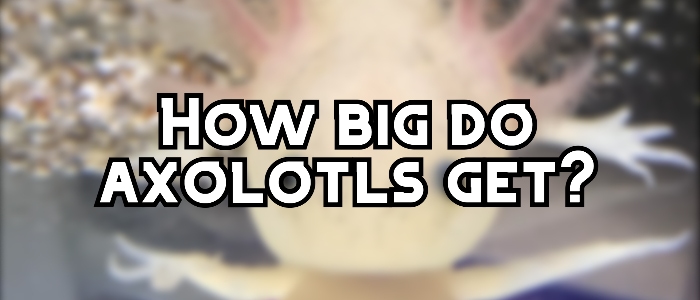
Axolotls are pretty messy pets, producing lots of ammonia in the water that can throw off the aquarium’s parameters quickly if not properly maintained. While a 10-gallon tank may be sufficient enough for an adult axolotl, I recommend sizing up to a 20-gallon one.
A standard 20-gallon Long tank has the dimensions to adequately support an adult axolotl. Namely:
- 30.25 inches (76.84 cm) of horizontal length;
- 12.5 inches (31.75 cm) of width;
- 12.75 inches (32.39 cm) of height.
You can also go with a larger option because that helps dilute the waste and makes maintenance easier.
Author’s note: Axolotls do better in larger tanks! They tend to live longer than when you keep them in something smaller like a 10-gallon. The bigger, the better.
If you have a young axolotl, they will do fine in a smaller tank, but as they grow, you should relocate them to a more spacious aquarium.
Plus, if you happen to have one that reaches a larger size than average, it will need the space.
Thinking of adding an axolotl to your tank? Check out various colorful morphs available here.
What affects the growth rate of an axolotl in captivity?

Typically, there isn’t much you can do to influence your axolotl to grow larger than what its genetics dictate.
You can’t make an axolotl grow bigger in captivity but you can stunt it.
Tank size, environment, but mostly genetics – all play a part in the growth rate of a captive axolotl.
Interestingly, axolotls in captivity tend to be significantly smaller than their wild counterparts.
Part of this is because most pet axolotls can be traced back to the 19th century when they were taken to Europe, then the US, for scientific experimentation. Because they were, and still are, bred in captivity, their gene pool is less diverse than in the wild.
Another reason they’re smaller in captivity is due to living conditions. In the wild, they have much more space and a wider range of food available to them compared to what is offered in an aquarium.
Water parameters will also likely be somewhat off with an axolotl in a tank too small for it.
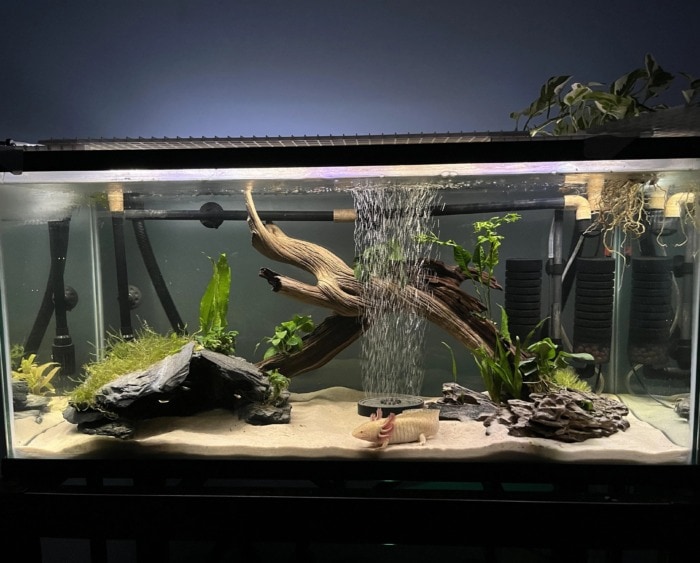
Axolotls grow to the size of their tanks in the sense that a tank that’s too small inhibits them, but that doesn’t mean it’s a good thing.
It’s a sign their environment isn’t facilitating their usual, lifelong growth cycle.
Their natural habitat, the Xochimilco Lake, is relatively cold, only about 60 – 65 degrees Fahrenheit, and you’ll want to mimic this with a heater or a water chiller if necessary. If the water is too warm, they won’t grow as well and may have a reduced lifespan.
Likewise, you will want to test water parameters regularly and do water changes as needed to keep the aquarium clean enough.
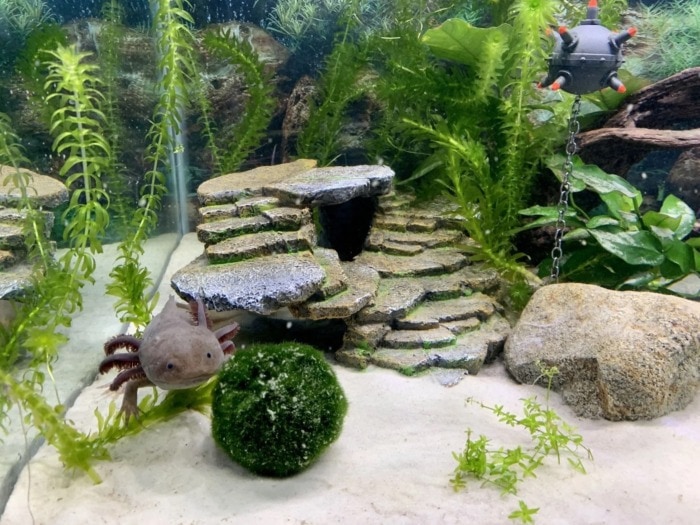
An improper diet can also hinder axolotl growth.
Axolotls are carnivores and require diets rich in protein for optimal development and health.
Live food is the best, but pellets are okay, as long as you choose one that is meant for axolotls.
Still, I strongly recommend supplementing live food like red wrigglers and earthworms.
Author’s note: A lot of people suggest feeding bloodworms, but be careful! If not properly cut up, bloodworms can get stuck in your juvenile axolotl’s gills and interrupt its breathing. If a worm does get stuck, try using a turkey baster full of tank water to gently squirt the worm away.
So knowing that it’s mostly out of your hands, focus on providing your pet axolotl with quality food and a nice habitat, and it will grow as big as it possibly can.




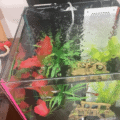


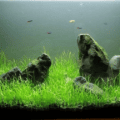
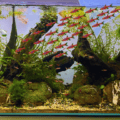

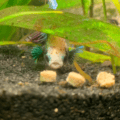
My Axolotls are 7 years old and live in an outdoor pond. As the climate is warming the summers are becoming too much for them and they get stressed. Two are coping and very fat but the third nearly died. He seems to be recovering and has put on a little weight but his gills were damaged, they were like bulbs instead of frills. I notice my golden one has some darker pigment spots on his face. Do you think these might be age spots?
Hey Su.
I don’t think Axolotls can have age spots. Incredible tissue regeneration is one of their main strength, so I doubt their skin can deteriorate to the point of getting age spots.
Regards.
My axolotl is 11 inches long and pretty fat. Must be a female. I feed Squishy earthworms. She (I’m assuming) is in a 10 gallon tank but we have a 25 gallon tank we’re going to move her to.
That’s great and thanks for sharing! Fat comfy axolotls are one of the few things that bring me happiness in life. What’s her name?